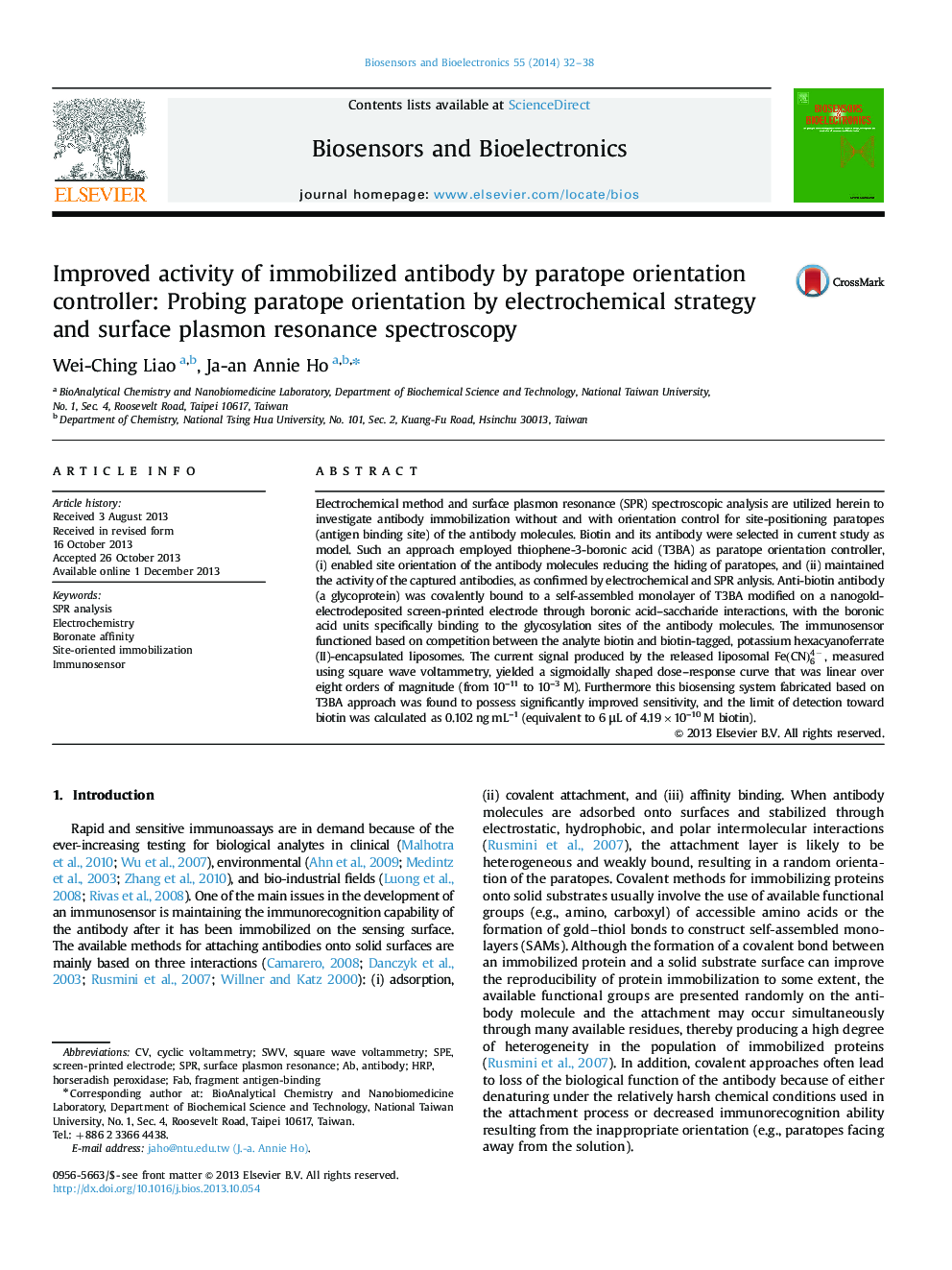| Article ID | Journal | Published Year | Pages | File Type |
|---|---|---|---|---|
| 866467 | Biosensors and Bioelectronics | 2014 | 7 Pages |
•Probing antibody orientation by electrochemical strategy and surface plasmon resonance spectroscopy.•Thiophene-3-boronic acid was confirmed to be an efficient paratope orientation controller.•Site orientation of the antibody molecules reduced the hiding of paratopes.•Site orientation of the antibody molecules maintained the captured antibodies activity.
Electrochemical method and surface plasmon resonance (SPR) spectroscopic analysis are utilized herein to investigate antibody immobilization without and with orientation control for site-positioning paratopes (antigen binding site) of the antibody molecules. Biotin and its antibody were selected in current study as model. Such an approach employed thiophene-3-boronic acid (T3BA) as paratope orientation controller, (i) enabled site orientation of the antibody molecules reducing the hiding of paratopes, and (ii) maintained the activity of the captured antibodies, as confirmed by electrochemical and SPR anlysis. Anti-biotin antibody (a glycoprotein) was covalently bound to a self-assembled monolayer of T3BA modified on a nanogold-electrodeposited screen-printed electrode through boronic acid–saccharide interactions, with the boronic acid units specifically binding to the glycosylation sites of the antibody molecules. The immunosensor functioned based on competition between the analyte biotin and biotin-tagged, potassium hexacyanoferrate(II)-encapsulated liposomes. The current signal produced by the released liposomal Fe(CN)64−, measured using square wave voltammetry, yielded a sigmoidally shaped dose–response curve that was linear over eight orders of magnitude (from 10–11 to 10–3 M). Furthermore this biosensing system fabricated based on T3BA approach was found to possess significantly improved sensitivity, and the limit of detection toward biotin was calculated as 0.102 ng mL–1 (equivalent to 6 μL of 4.19×10–10 M biotin).
Graphical abstractFigure optionsDownload full-size imageDownload as PowerPoint slide
